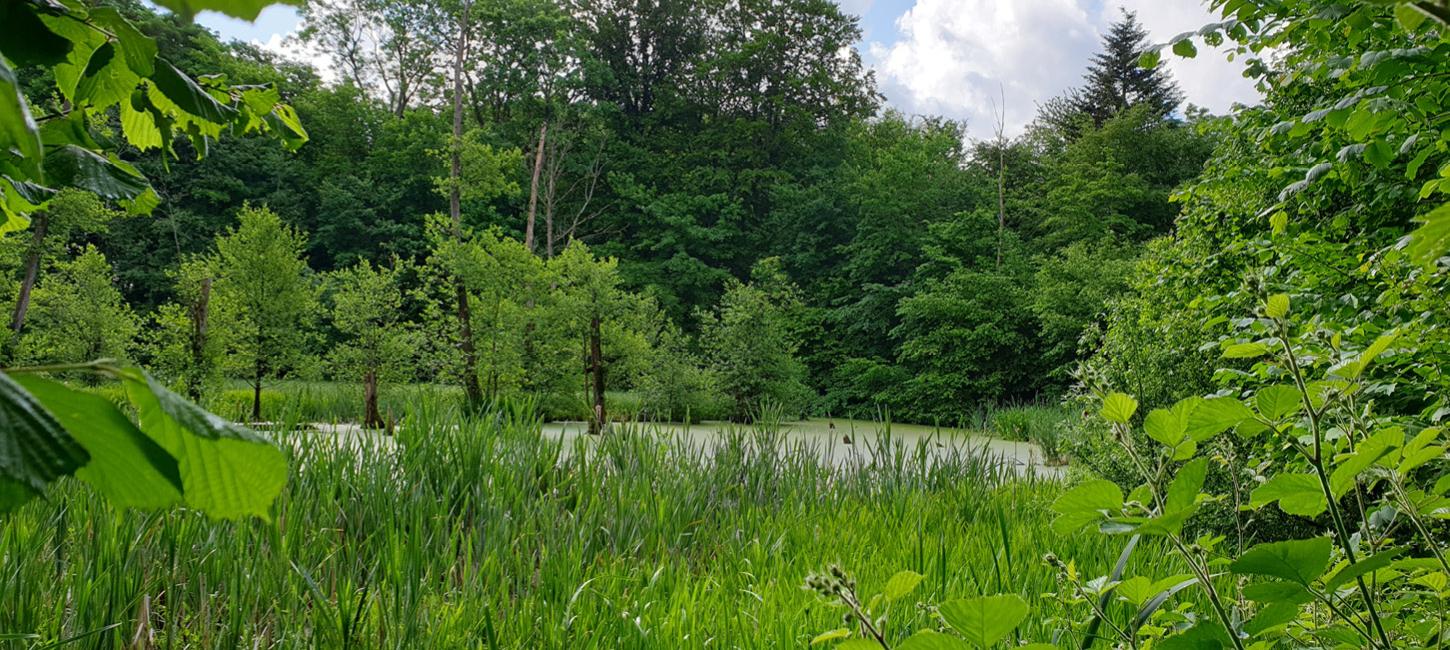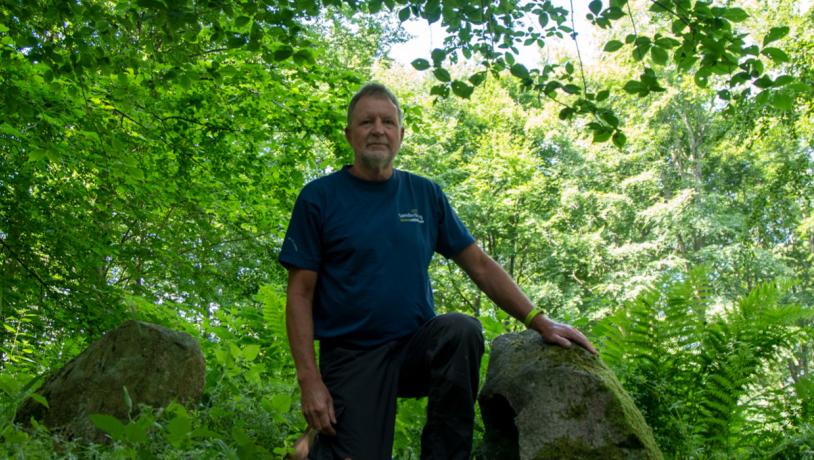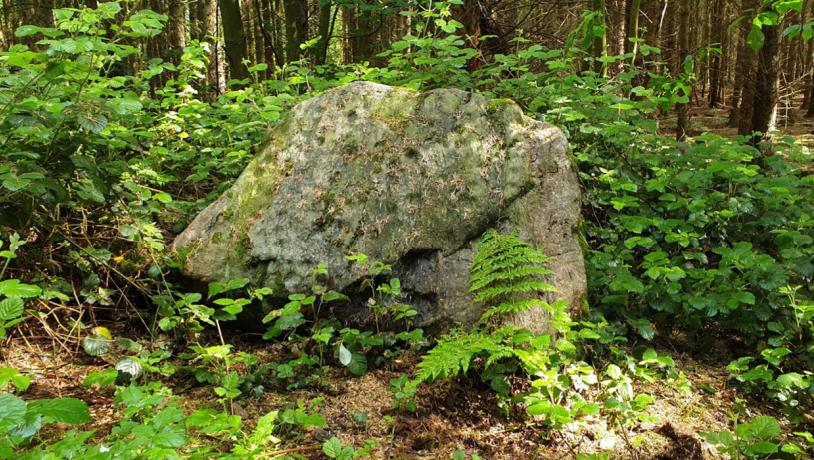Rumohrsgård Dyrehave - prehistoric relics
In a small forest on the island of Als, there is a very special cross stone that saved the other stones at the dolmens from being removed and re-used.

In the middle of the island of Als, lies this beautiful forest area, where a stream meanders in and out between a wealth of ancient monuments.
Nature guide Tom Reersdorff tells about the historic forest Rumohrsgård Dyrehave, near Notmark on the island of Als in the Sønderborg area.
If you drive along route 8 towards the town of Fynshav on Midtals, you will meet a road sign towards Notmark and Hundslev. This is followed towards Notmark. Just after Notmark church you meet on the left hand a sign that says Rumohrsgård Dyrehave.
Along the small road (Skovvej) you drive further down to the forest. There you meet a small parking site.
Rumohrsgård Dyrehave is a forest with an area of 32 hectares. The forest previously belonged to the manor Rumohrsgård and in the 18th century the forest was used for keeping deer and there was 3 small fish ponds.
The forest was bought by the Danish State in the 1920s and in 1931 the forest was transferred to Sønderborg forest district, which today is part of the Nature Agency Naturstyrelsen Sønderjylland.
The forest is primarily a deciduous forest consisting mainly of beech, ash, sycamore, some oak, spruce and mixed trees. As with the other lush deciduous forests on ther island of Als, the forest floor in spring is covered with white anemones, crested larch and mercuries. Furthermore, there are various grasses. Among other flora of the forest, the red campion and stitchworth is seen.


In the forest there are 2 forest lakes, where among other things the idyllic "Karsesø" is worth a visit. It is named after the large bittercress which in early summer adorns the seashore with its beautiful white inflorescences.
The forest also offers a varied wildlife. If you are completely quiet on your walk, you can meet small flocks of fallow deer, roe deer and if you are really lucky, you may see a red deer. At the southwestern end of the forest you will find a large fox / badger complex, which means that they often miss their chickens in the vicinity of the forest. Also seen in the forest and worth mentioning is: sea eagle, hen harrier, red kite, common buzzard, greylag goose and many other interesting birds.
Rumohrsgård Dyrehave also contains a number of unique natural and cultural historical sights. South of a crossroads in the forest are two distinctive long dolmens, which are from the Stone Age. On these long dolmens you can still see the original deck stones as well as curbs. In the south-eastern corner of the forest is a Bronze Age mound, on which stands a so-called bowl stone with 155 bowl-shaped depressions. According to several statements, these depressions were to be signs of fertility symbols, zodiac signs, sun signs or sacrificial bowls. This stone was to be one of the best preserved in Denmark.
Rumohrsgård Dyrehave is a beautiful place and the forest is manageable. Bring your binoculars with you to the good experience. From the southwestern edge of the forest you can see Rumohrsgård, which is idyllically located in the landscape between the fields.
Have a nice trip.
Tom Reersdorff
Nature guide in Sønderborg Municipality
Learn more about the small forest Rumohrsgård Dyrehave, where it's also allowed to pitch a tent. Just be aware that there is no fire pit, so hot meals must be prepared on a camping stove.
Explore more natural areas, activities, and animal species with recommendations from the nature guides in Sønderborg Municipality.